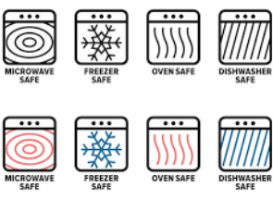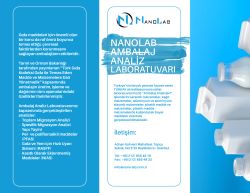Packaging

Packaging Analysis
Food contact packaging and materials play a vital role in the journey of food from its source to the consumer's table. Beyond takeaway containers and beverage cartons, it covers a wide range of materials used in the food industry. In the wide world of food production, safe and compliant packaging is critical, covering everything from plastic bottles on grocery shelves to silicone baking molds used in the kitchen. Navigating regulations on a wide range of materials such as paper, rubber, enamel, glass, ceramics and more is crucial to ensure food safety and market access.
As the types of food contact packaging expand, so does the complexity of testing and the ever-evolving global regulations and sanctions. Our laboratory specializes in comprehensive testing solutions and regulatory consultancy for food contact materials, enabling you to meet complex requirements and enter markets with confidence.
Understanding the diverse and ever-evolving regulatory landscape for food contact packaging is critical to ensure product safety and market access.

United States of America (ABD)
US Food and Drug Administration (FDA) 21 CFR Part 177: Indirect Food Additives: Polymers
21 CFR Part 178: Indirect Food Additives: Excipients, Production Aids and Coating Ingredients
These regulations set out requirements for the safety and suitability of materials used in contact with food.
European Union (AB)
- EU Regulation 1935/2004: This framework regulation sets out general principles for the safety of food contact materials within the EU.
- EU Regulation 10/2011: Covers the requirements for the safety and composition of plastic materials intended to come into contact with food.
Avrupa Birliği'ndeki Ulusal Düzenlemeler
- Germany (BfR Recommendations): The German Federal Institute for Risk Assessment (BfR) issues recommendations that often affect the wider European market.
- France (DGCCRF Guidance): The French Directorate General for Competition Policy, Consumer Affairs and Counterfeit Control (DGCCRF) publishes detailed guidance notes on ensuring the safety of food contact materials.
- Italy (DM 21): Italy's Ministerial Decree 21 (1973) provides specific requirements for plastic, paper and cardboard for food contact.
- Spain (AESA Guidelines)
China
China GB 4806 series: This series of national standards outlines general safety and testing requirements for various food contact materials such as plastics, ceramics and paper.

Beyond verifying that your packaging materials are safe, our laboratory helps you ensure that products are fit for their intended use. Through rigorous testing protocols, we determine whether your packaging can withstand the heat of ovens or microwaves, repeated cleaning cycles of dishwashers and more. This data allows you to label your products with confidence, providing consumers with clear instructions for safe and optimal use.





